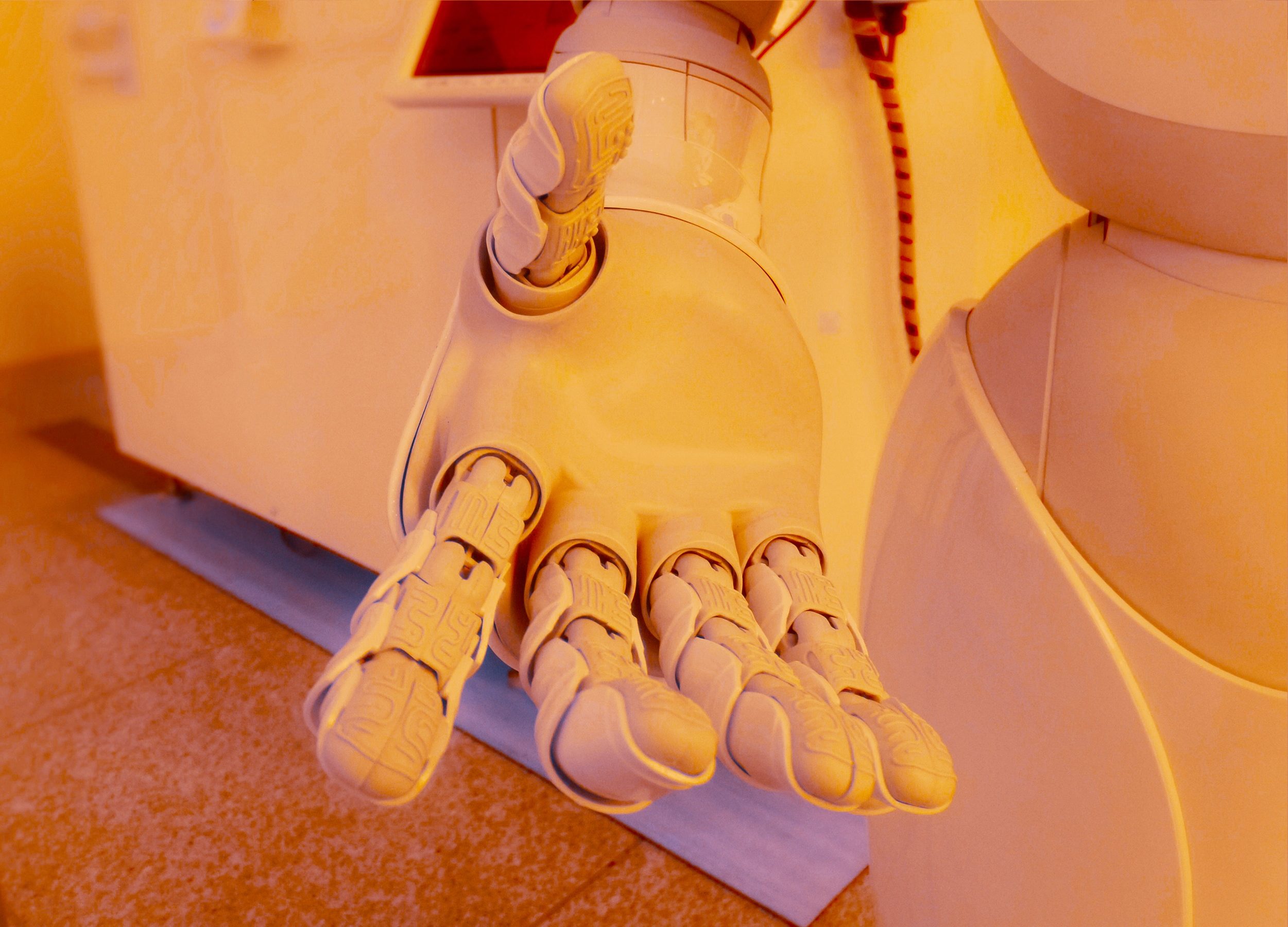What does it mean for humans and machines to collaborate? Naturally, the images of robotic arms in an auto assembly line and Amazon’s warehouse floor where Roomba-like robots move products around come to mind.
Both scenarios have humans and machines working together. But they aren’t necessarily collaborating. The machine has a rigid path or capability and the human works around that path to do what the robot cannot.
The most capable, and powerful, industrial machines still have to work in very precisely controlled environments, away from soft, breakable humans. These machines might move quickly and precisely, but they are so blind and stupid that they’ll gladly break a [person’s] limb without so much as an “oops.”
Will Knight, MIT Technology Review
True human-machine collaboration would involve a responsive robot that can listen and fulfill the human worker’s commands and eventually anticipate the human worker’s needs. In other words, a robot as an assistive, helping hand. But is this just a pipe-dream?
Not necessarily. It starts with developing robots that sense and adapt to their surroundings – an area that Realtime Robotics has made great progress in:
Realtime Robotics is giving robots the kind of low-level intelligence needed to move through the real world. This is the physical awareness that humans and animals take for granted whenever they move an arm or a leg.
Will Knight, MIT Technology Review
In several different rooms at Realtime, industrial robot arms are testing the capabilities of a new chip. When hooked up to 3D sensors, this chip lets the machines rapidly consider a range of different actions, effectively “imagining” the outcome, before choosing the one best suited to the task at hand.
The company’s chip supercharges the mathematical computations behind a relatively simple motion-planning algorithm. By running the computations in parallel, the dedicated chip can perform them more than 10,000 times more quickly than a regular computer chip, while also using less power.
The results are astonishing and speak for themselves in this video. The application of these spatially aware robots to the factory or assembly floor is clear. However, I’m particularly interested in how these arms could help other skilled laborers in the field.
Human-machine Collaboration
The evolution of these robots may include teaching the robot a set of desired actions and accompanying voice commands. For instance, a plumber may ask one of these robots to: hold this pipe in place, twist this until it’s flush, hand me the ⅜” socket, etc…
I doubt one of these robots will “walk” on the job with a technician. But, it may be incorporated into existing equipment.
A tool manufacturer like Stanley Black & Decker (maker of Stanley, Craftsman, Husky, etc.) could partner with a robotics company like Realtime Robotics to create a tool bag that incorporates an intelligent, assistive robot arm. Ryan even prototyped how the bag could look:
I’m aware that we’re talking about millions of dollars in development costs for these robotics companies. And maybe this idea won’t make sense in the context of a $300 tool bag for quite some time. However, in the context of an auto mechanics garage, the airplane tarmac, or construction site – a $10k-$50k robotic assistant arm may be worthwhile.
Regardless, I’d like to point out that trades are highly nuanced and cannot be systematized in the same way factory assembly lines can. It’s for this reason that their roles are relatively safe (especially in comparison to many other jobs). Below is the number of employed craftsmen (and the % likelihood they’ll experience computerized automation in the next two decades):
- 676,980 Carpenters (72%)
- 647,380 Automotive Service Technicians and Mechanics (59%)
- 607,120 Electricians (15%)
- 411,870 Plumbers, Pipefitters, and Steamfitters (35%)
- 294,730 HVAC Mechanics and Installers (65%)
- 128,570 Aircraft Mechanics and Service Technicians (71%)
- 117,670 Electrical Power-Line Installers and Repairers (10%)
- 43,370 Medical Equipment Repairers (27%)
An unprecedented skilled labor shortage exists… Skilled trades (electricians, carpenters, welders, bricklayers, plasterers, plumbers, masons and more) have maintained the No. 1 position in vacancies from 2010 to the present.
Brenda Richardson, The Washington Post
In this time when everyone seems to be flocking to analytics and software, there’s a large negligence occuring for skilled handiwork.
